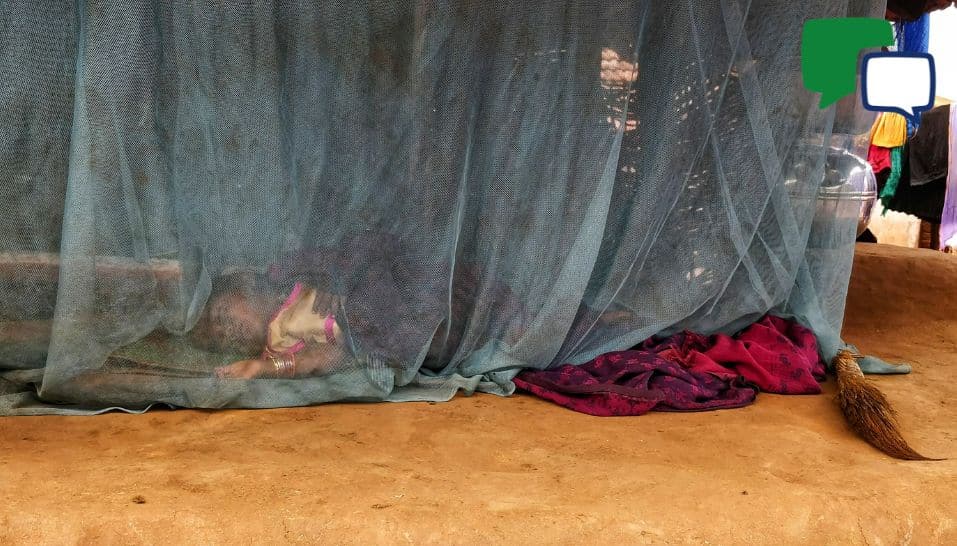A community-based survey in India has showed that close to half of the population has been exposed to dengue infection at some point in their life with urbanisation seen as one of the main drivers for rising dengue incidence in the country
India is one of the highest disease burden countries in the world and contributes significantly to seasonal outbreaks such as malaria, dengue, and other viral diseases that have become endemic to several parts of the country.
Dengue Fever (DF) continues to be an important public health problem in India, as evidenced by the high proportion dengue positivity, severity and case fatality. The epidemiology of dengue virus in India has been very complex and has substantially changed over almost past six decades in terms of prevalent strains, affected geographical locations and severity of disease. Unfortunately, 2022 was no exception to the growing incidence of the disease with more cases reported than COVID in the country.
DF is the most important arboviral disease caused by the bite of the infected female – Aedes Aegypti mosquito in humans. The two forms of the disease – Dengue fever (DF) and Dengue Haemorrhagic Fever (DHF) affects all genders and age-groups equally. But, DHF is considered to be more severe and could be fatal for children during an outbreak.
Delhi and Dengue
The National Capital Territory of Delhi experiences tropical steppe type of climate and seasons are marked by extreme temperatures ranging from 2°C to 47°C, average rainfalls of 886mm per annum. The monsoon period usually starts from July to mid September when the climate remains wet and humid with a large number of reported dengue cases every year and become hyperendemic. Delhi has the highest population density and the city has recorded high growth in the population during the last two decades, which are critical for dengue transmission. DF and DHF have also been reported from 24 states in India with thousands of cases and thousands of deaths annually.

In 2022, the national capital reported 4,469 cases of dengue, while nine patients died due to dengue, as per the data from the Municipal Corporation of Delhi. According to the data, in the last week of December, 108 dengue cases were reported claiming 23 lives. In 2021, 9,613 dengue cases were recorded in the city, the highest since 2015, along with 23 deaths — the highest since 2016.
The occurrences of DF incidences are found to be highest in September and October. These months represent the transition period from the rainy season to the winter.
The significant causative factors for DF occurrences in Delhi have been investigated for in-depth understanding. The humid and warm climate of Delhi was found to provide a favourable environment for breeding of Aedes mosquitoes and the frequent outbreaks and the increasing severity of the disease. The results have indicated strong association of DF incidences with temperature, humidity, wind speed, sunshine hours, age, built-up density, vegetation density and distance from dairy locations, water bodies and drainage network. This has increased the urgency of developing effective dengue surveillance and control strategies. It has also generated a need for multidisciplinary research and collaboration between health professionals, epidemiologists, statisticians, and computer and earth scientists will be key to anticipating and addressing such health challenges.
A community-based survey in India showed close to half of the population (48.7 percent) has been exposed to dengue infection at some point in their life. Urbanisation was seen as one of the main drivers for rising dengue incidence in India. No part of urban India is now untouched by the disease.
Resurgence of Dengue Fever
The resurgence of Dengue Fever DF epidemic is due to five major reasons namely demographic changes, social change, agricultural changes, changes in pathogens and deficiencies in public health services.
The spatial–temporal analysis of dengue cases can be useful in identifying the hotspots which can be mapped geographically as high risk areas and timely action may be taken for prevention and control of dengue. The analysis can be useful for targeted intervention to control the dengue in such areas, and this can be achieved by sharing the findings and discussing its advantages with the local health administration and dengue control teams.

Transovarial transmission of dengue virus (from female mosquitoes to their offspring) and the long-distance dispersal of drought-resistant aedes eggs in suitable containers facilitate efficient expansion of the virus. Water-storage containers, which are commonly used in regions where a piped water supply is inadequate, or rainwater-filled containers (e.g., tires, pots, and tree holes) can become mosquito breeding sites and can thus drive epidemics. The differential ability of the dengue mosquito to survive normally lethal temperatures may influence their roles in future outbreaks.
Drugs for Neglected Diseases Initiative (DNDi), a not-for-profit research and development organization, is creating a global partnership to tackle the rapid spreading of climate-sensitive disease in endemic-countries.
DNDi is bringing together partners in dengue-endemic countries to find urgently needed treatments for the disease by investing in bringing South-South collaborations together and partnering with dengue-endemic countries to find a safe, affordable, and effective treatment for the disease within five years. We are also engaging in policy discussions and advocating for a more equitable, inclusive, sustainable, and access-oriented research and development (R&D) ecosystem.
Like bacteria, viruses can evolve to become resistant to some antiviral drugs. This has been observed in the treatment for HIV and for influenza. The DNDi approach for repurposing drugs to treat dengue includes exploring potential antiviral and host directed therapy, which is likely to be more successful than only investigating antiviral drugs for treating dengue. However, for any of these approaches, more funding is required to make these efforts successful and reduce the burden on the health systems, as severe dengue leads to hospitalization and death in many countries.

There is a wealth of evidence that recent climate change has already affected pathogen–vector–host systems, particularly in temperate regions in the tropics. The spread of vectors and the pathogens they transmit has been anticipated by scientists. There are high chances that if humans fail to mitigate and adapt to climate change, drug and insecticide resistance will continue to rise, a shift in emphasis from prevention to emergency response and due to genetic changes in pathogens.
Role of Public Health in addressing dengue
The deficiency in public health services includes lack of effective vector control, deterioration of public health infrastructure to control vector-borne diseases, inadequate surveillance of disease and prevention programs, along with climate patterns such as temperature and rainfall trends having direct effects on vector-borne disease transmission.
There is an immediate need to strengthen integrated vector control measures during the rainy season with special focus on personal protection measures among children to control the disease incidence. To organize health education programmes about dengue disease and increase community knowledge, sensitizing the community to participate in integrated vector control programmes can also be an immediate response to tackle the incidence of the disease.
Also Read: Rising Out-of-Pocket medical costs can be covered. Here’s how


















Add Comment